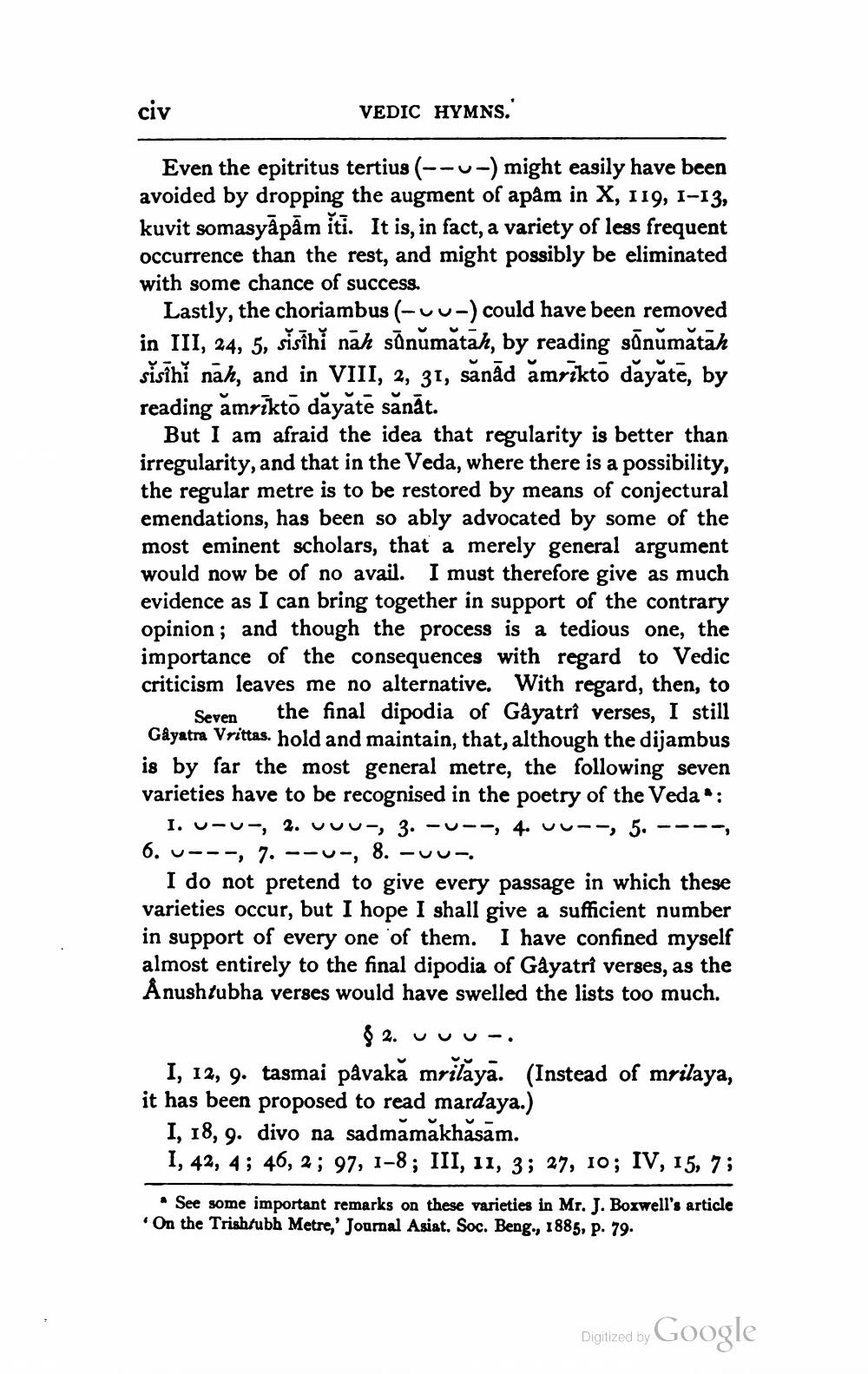________________
civ
VEDIC HYMNS.'
Even the epitritus tertius (--0-) might easily have been avoided by dropping the augment of apám in X, 119, 1-13, kuvit somasyāpām iti. It is, in fact, a variety of less frequent occurrence than the rest, and might possibly be eliminated with some chance of success.
Lastly, the choriambus (-uu-) could have been removed in III, 24, 5, sisihỉ näh sūnumatah, by reading sūnumătah sisihi nah, and in VIII, 2, 31, sanād amrīkto dayate, by reading amrikto dayatē sanāt.
But I am afraid the idea that regularity is better than irregularity, and that in the Veda, where there is a possibility, the regular metre is to be restored by means of conjectural emendations, has been so ably advocated by some of the most eminent scholars, that a merely general argument would now be of no avail. I must therefore give as much evidence as I can bring together in support of the contrary opinion; and though the process is a tedious one, the importance of the consequences with regard to Vedic criticism leaves me no alternative. With regard, then, to
Seven the final dipodia of Gayatri verses, I still Gayatra Vrittas. hold and maintain, that, although the dijambus is by far the most general metre, the following seven varieties have to be recognised in the poetry of the Vedao:
1. u-u-, 2. JUU-, 3. -U--, 4. UU--, 5. ----, 6. u---, 7. --u-, 8. -uun
I do not pretend to give every passage in which these varieties occur, but I hope I shall give a sufficient number in support of every one of them. I have confined myself almost entirely to the final dipodia of Gayatri verses, as the Anushtubha verses would have swelled the lists too much.
$ 2. vuuI, 12, 9. tasmai pavakă mrilaya. (Instead of mrilaya, it has been proposed to read mardaya.)
I, 18, 9. divo na sadmamakhasam. 1, 42, 4; 46, 2; 97, 1-8; III, 11, 3; 27, 10; IV, 15, 7;
See some important remarks on these varieties in Mr. J. Boxwell's article On the Trishtubh Metre,' Journal Asiat. Soc. Beng., 1885, p. 79.
Digitized by Google




